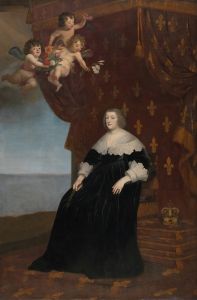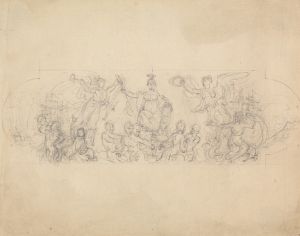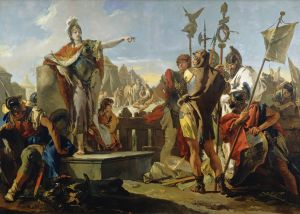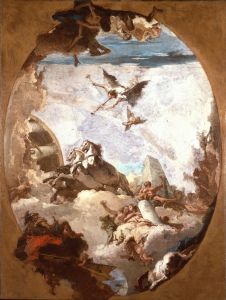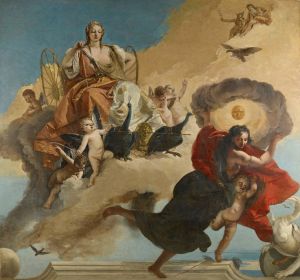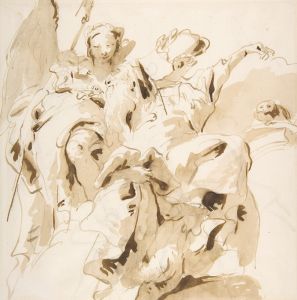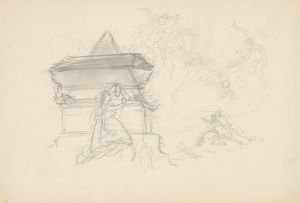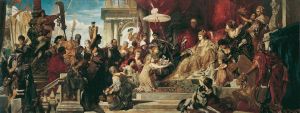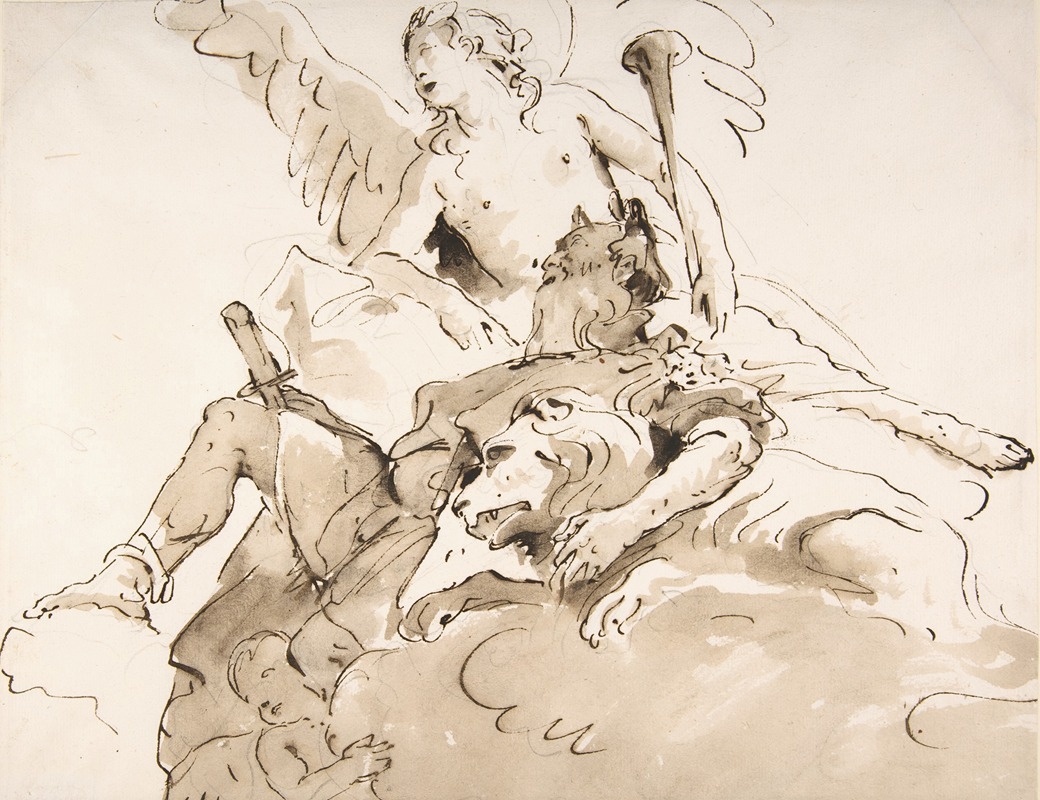
Apotheosis of a Warrior
A hand-painted replica of Giovanni Battista Tiepolo’s masterpiece Apotheosis of a Warrior, meticulously crafted by professional artists to capture the true essence of the original. Each piece is created with museum-quality canvas and rare mineral pigments, carefully painted by experienced artists with delicate brushstrokes and rich, layered colors to perfectly recreate the texture of the original artwork. Unlike machine-printed reproductions, this hand-painted version brings the painting to life, infused with the artist’s emotions and skill in every stroke. Whether for personal collection or home decoration, it instantly elevates the artistic atmosphere of any space.
Giovanni Battista Tiepolo, an Italian painter and printmaker, is renowned for his grand and imaginative frescoes that epitomize the Rococo style. Among his extensive body of work, "Apotheosis of a Warrior" stands out as a significant piece, although specific details about this particular painting are not as widely documented as some of his other works. Tiepolo's oeuvre is characterized by its vibrant use of color, dynamic compositions, and the ability to convey complex allegorical themes with clarity and elegance.
Tiepolo was born in Venice in 1696 and became one of the most prominent painters of the 18th century. His work was highly sought after by European nobility, and he was commissioned to create frescoes for palaces, churches, and villas across Italy and beyond. His style is marked by a lightness and grace, often depicting scenes from mythology, history, and religion with a sense of drama and movement.
"Apotheosis of a Warrior" likely reflects Tiepolo's mastery in portraying allegorical and historical subjects. The term "apotheosis" refers to the elevation of someone to divine status, a common theme in art that celebrates the virtues and heroic deeds of individuals. In Tiepolo's hands, such a subject would be rendered with a sense of grandeur and theatricality, using his signature techniques of foreshortening and perspective to create an illusion of depth and space.
Tiepolo's frescoes are known for their ability to transform architectural spaces, creating an immersive experience for the viewer. His use of light and shadow, combined with a delicate palette, often results in a sense of airiness and ethereality. This approach can be seen in his other famous works, such as the frescoes in the Würzburg Residence in Germany and the Palazzo Labia in Venice, where he skillfully integrates figures and architecture to create a cohesive narrative.
While specific information about "Apotheosis of a Warrior" is limited, it can be inferred that the painting would embody Tiepolo's typical style and thematic interests. His works often include a cast of characters drawn from classical mythology or historical events, depicted with a sense of movement and vitality. The figures are typically arranged in dynamic compositions, with gestures and expressions that convey the narrative's emotional and symbolic content.
Tiepolo's influence extends beyond his lifetime, as his work represents a culmination of the Baroque tradition while also paving the way for the Neoclassical movement. His ability to blend realism with idealism, along with his technical prowess, has left a lasting impact on the art world.
In summary, while detailed information about "Apotheosis of a Warrior" by Giovanni Battista Tiepolo is scarce, the painting can be appreciated within the broader context of Tiepolo's artistic achievements. His work continues to be celebrated for its imaginative compositions, masterful use of color, and the ability to convey complex themes with clarity and elegance.






